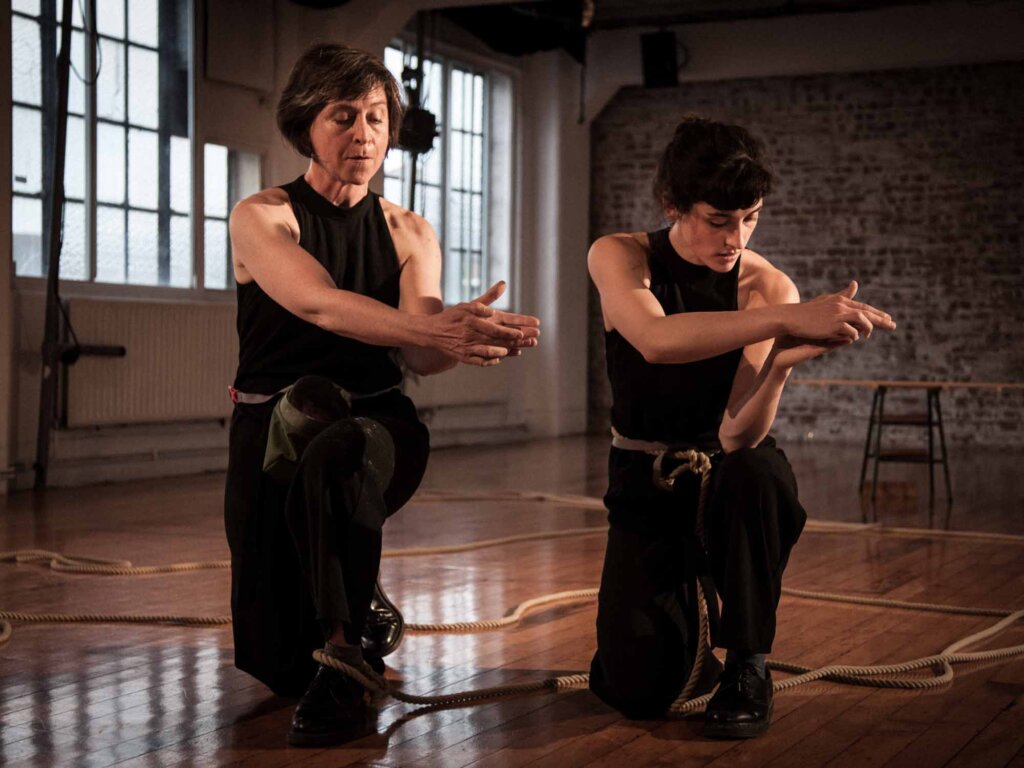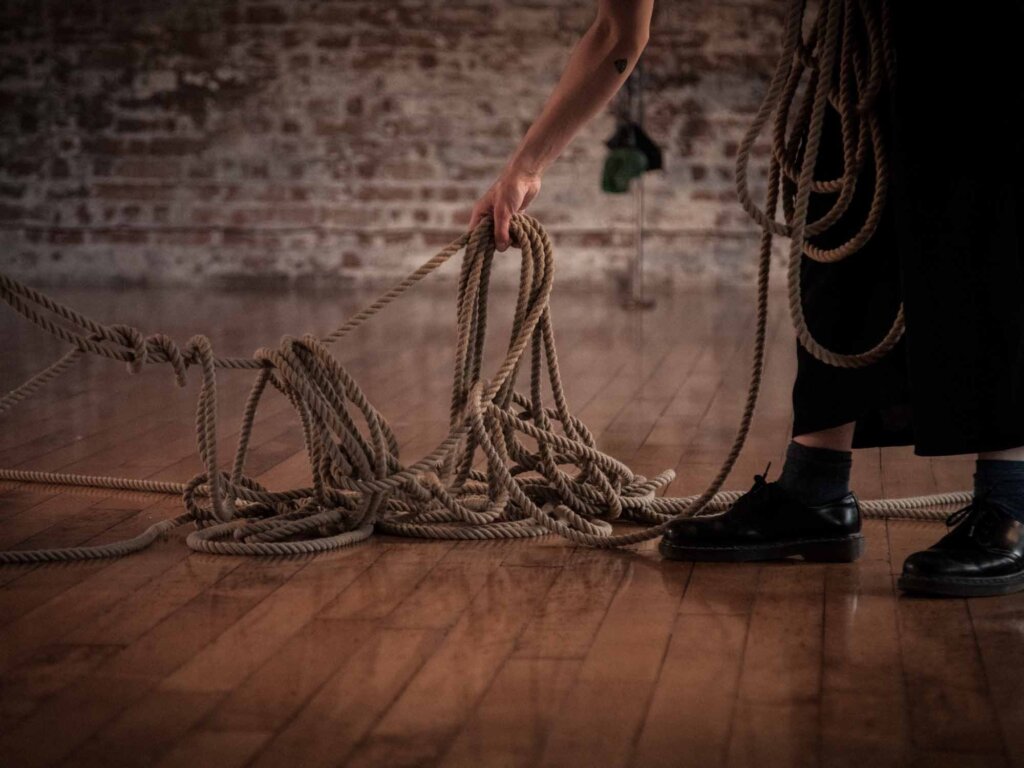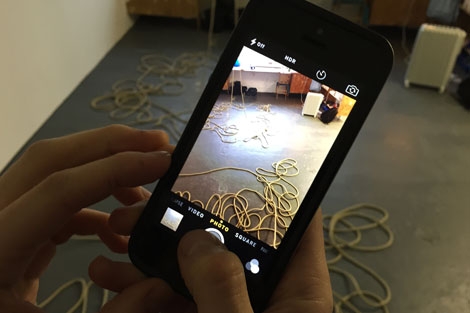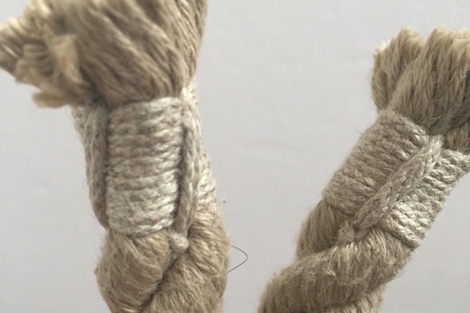Sophie Grodin and I wrote “On Creating a Climate of Attention: the composition of our work” an essay which appeared in Performance and Ecology: What Can Theatre Do? a special performance issue of the journal Green Letters; studies in ecocriticism (Volume 20 issue 3, 2016) guest edited by Deidre Heddon and Carl Lavery. Here is an excerpt from notes for our introductory section:
As a starting directive we give ourselves the goal of listening and of sensing the environment in which we find ourselves. We are conscious that the conditions around us will be feeding into what the work becomes. The interaction between us creates a climate which will influence the work and its aesthetic. We are conscious that collaborative devising relies on a sensitivity to the ecology we are part of as the work is being made. Which is to say to the totality or pattern of relations between the organisms involved and our environment. There are some features of this that support the work and there are some that we face as challenges to the work but engaging with these features becomes the warp to the weft of what we are able to make. We begin with a kind of open intention and we finish a work with fine tuning it to suit a set of specific intentions but in the vast middle area of the devising process we are struggling to find the best way to interact with our immediate environment and most of all we are listening and observing what is possible within the parameters given. We have to find the balance between having an idea and uncovering what is there. We have to see ourselves as part of nature, as equal partners with the natural world we find ourselves surrounded by, even if that is a human-made construction. We might see ourselves as gardeners but we also see that the gardener is part of the garden.
I’ve tried to say this is how we have made what we have made. But how do I know how it happened? I was there but I was not able to see it as I was it. I was the subject as much as I was the maker. And I was always trying to understand why I thought in the wiggly line I was thinking in. Where was the straight line? was there a straight line? or was it more of a way that one of us was able to stop following a random path and follow instead a line of intention, a line that connected one part to another in an unbroken trajectory of unfolding meanings? Unfolding meanings. Sometimes one is simply writing to find the way forward and when this results in only one good line in a whole day of writing, well, so be it. It is not far from the tactics of the cherry tree. The cherry tree generates millions of blossoms creating a multitude of seeds most of which never propagate the species but nevertheless feed the birds and the bees and countless other creatures in the vicinity.
Alternation becomes a way forward. Sometimes you have to zigzag to find the path up or down. After watching Watermark, the film by Jennifer Baichwal and Edward Burtynsky we wanted to explore the properties of water. In Watermark there are many examples of the ways water behaves in a landscape. We poured water on the floor and watched it follow the path of least resistance.
There it is, a little trickle of an attempt to tell how we create or pay attention to the ecology around us during the making process. We are working with what we can pull out of the air, a kind of wild yeast that feeds on the flour and makes the bread rise.
________
‘This article explores how two performance makers – Karen Christopher and Sophie Grodin of the company Haranczak/Navarre – approach the rehearsal process as an ecological practice in and by itself. Drawing attention to such things as listening, openness and patience, Karen and Sophie explore how their devising strategy transcends the studio and becomes a form of relating to the world in general. Karen and Sophie illustrate their ideas by drawing on generative metaphors and by grounding their insights on their empirical experience of making Control Signal (2013) and miles & miles (2016). In the article there is an attempt to extend the dialogic nature of Haranczak/Navarre’s work into the editing process, to create, that is, an extended climate of attention.’ editors’ note
If you are interested in our essay but can’t get your hands on a copy of Green Letters let me know.
Green Letters, Performance and Ecology: What Can Theatre Do? was published online summer 2016.




